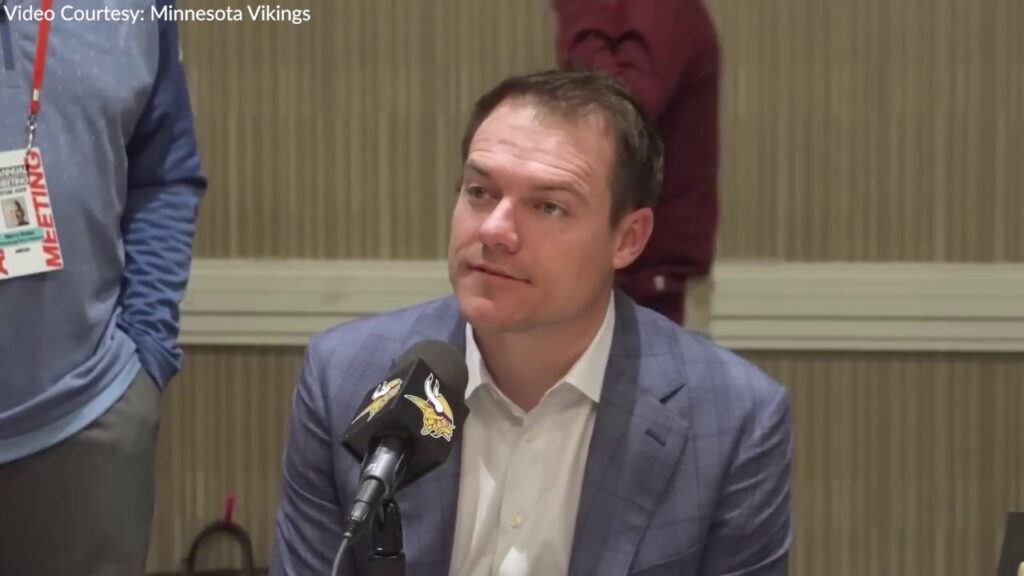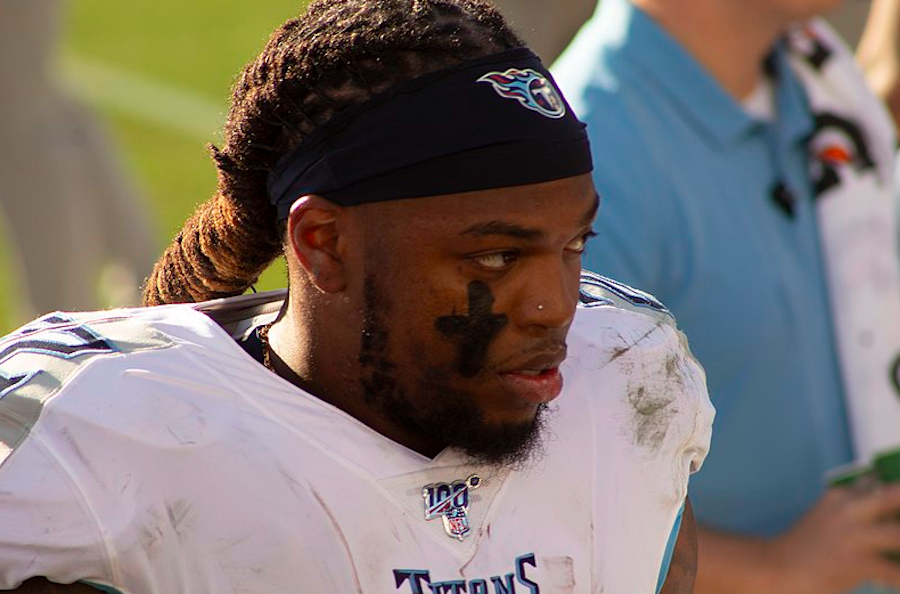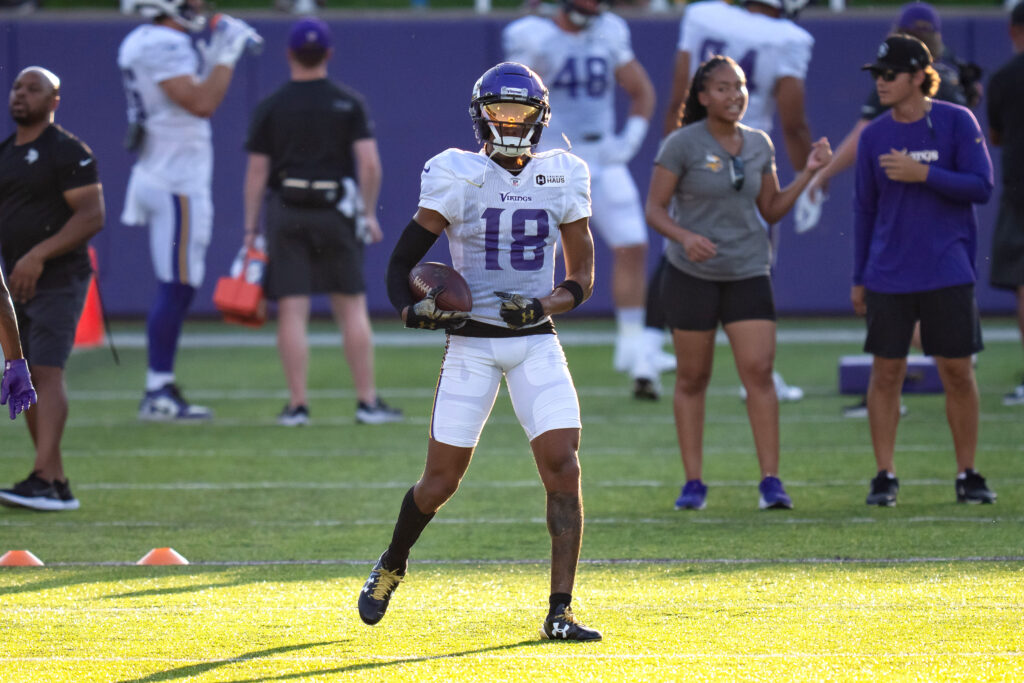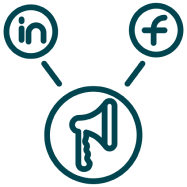EAGAN — Before the Minnesota Vikings faced off with the Green Bay Packers last Sunday, players talked with general manager Kwesi Adofo-Mensah to let him know they liked the direction the team was heading.
“They kind of reached out to me and said, ‘Kwes, we’re gelling. We love this team. We love being here,’” Adofo-Mensah said on Wednesday.
It doesn’t take much effort to interpret that as “we can win, please do not have a fire sale.”
The team was coming off a victory over the San Francisco 49ers that sparked belief that they could get things turned around and make the playoffs. By the fourth quarter of the game at Lambeau Field, their messages to the GM were looking pretty well justified by a 24-10 lead with the ball in the red zone.
And then a grenade was dropped into the Vikings’ season in the form of an Achilles injury that will keep quarterback Kirk Cousins out for the rest of the year.
Suddenly the Vikings went from potential buyers at the deadline to watching their playoff odds plummet as the QB was carted off. Adjusted for Cousins’ injury, Aaron Schatz’s DVOA model for postseason chances dropped the Vikings to just over a 25% chance to reach the playoffs.
But Adofo-Mensah did not sell his most valuable asset pass rusher Danielle Hunter — though teams certainly called. He explained that in order to put up a “for sale” sign in the front yard of TCO Performance Center they would have needed to believe the return would have boosted their chances to win in the future significantly.
“I came to the conclusion that first and foremost, when [Vikings Head Coach] Kevin [O’Connell] and I came together, we said we were always going to play meaningful games in Minnesota,” Adofo-Mensah said. “And to play meaningful games, you need really good players to do that. So to not have those players, there has to be a real reason, something probabilistically that you think will get you meaningful games sometime in the future. I just never really saw that opportunity at this time.”
So the Vikings kept the group together outside of left guard Ezra Cleveland, who was traded to Jacksonville because Dalton Risner has effectively taken his spot in the starting lineup. They acquired a quarterback with starting experience in Josh Dobbs at the suggestion of the personnel department and blessing of people in the know with his former team in Cleveland.
“A lot of people want to come here because they love Minnesota, a lot of people want to play for Kevin, a lot of people want to come be on this team and this offense,” Adofo-Mensah said. “So, there were a lot of options. But again, this whole time we stuck to our guns – ‘This is what we’re trying to do.’”
That reads like there were opportunities for the Vikings to spend more in terms of assets in attempts to chase a quarterback who might give them slightly higher odds at getting to the playoffs.
This is where we reach the “competitive rebuild” portion of the program. The decision to get Dobbs for a handshake and wink from Arizona rather than a more proven QB like Jacoby Brissett, who reportedly was shopped by Washington, suggests that the Vikings still remain heavily focused on the bigger picture rather than throwing draft picks to the wind.
So if they are looking at 2024 and beyond (and they did not acquire a quarterback who could be an option for starting in 2024), where does that leave Cousins?
The veteran QB, who will be 36 years old next year, does not have a contract for next season. The Vikings would need to re-sign him amidst his recovery if they want to go forward with him under center.
On Tuesday, O’Connell argued that Cousins’ performance through eight games was the best that he’d played during his career. Had he continued that level of play and the Vikings reached the playoffs, it seems nearly inevitable that he would have been back in purple next year. But now that he has suffered a major injury, it stands to reason that the Vikings’ path could head in the direction of drafting a quarterback or looking for veteran options.
Adofo-Mensah said that his view on the future at QB hasn’t been moved because of the Achilles tear.
“I don’t think it changes our long-term picture at all,” he said.
The history of quarterbacks past the age of 35 isn’t all that promising unless you are destined for the Hall of Fame like Drew Brees or Aaron Rodgers. For example, Joe Flacco was a New York Jet at age 35. Jay Cutler was retired. Ryan Tannehill hit a cliff last year at 34. Even Matt Ryan and Eli Manning were not the same after hitting their mid-30s.
But Adofo-Mensah pushed back on the idea that all players of a certain age are the same when it comes to their age curves.
“I know what his age is, but his process makes him younger,” Adofo-Mensah said. “You saw also on the Quarterback show what he puts into his body. I kind of compare it to somebody like LeBron [James], who knows that his body and his mind are the things that make him super valuable, so he puts a lot of time into them. I don’t think he’s a normal 35- year-old person in that regard, and you talk about an Achilles injury, how does that impact his game and his particular skill set? These are all things that we’ll think about when we go into those discussions.”
So the injury does not seem to clarify the situation. It would appear to make a future negotiation more muddy. What does a team pay for a 36-year-old quarterback coming off an Achilles injury? How many other teams would be willing to pay a higher price than whatever the Vikings would set on him? How accurately could they predict his future, even if his recovery timeline is the best-case scenario?
When he was asked whether he wants Cousins to return, this is how Adofo-Mensah responded:
“Kirk played great,” he said. “I think my ‘want’ for Kirk to come back isn’t just a ‘me’ thing. You know, it’s a negotiation. You come together at the table, and you try and see if everything works together, and we’ll have that dialogue when the time comes.”
There have been reports that the Vikings wanted to extend Cousins last offseason but the two sides could not reach an agreement on the length and dollars. It’s hard to say whether the injury makes a short-term deal easy to work out or the dollars hard to settle on. There are also about a dozen teams who could arguably need a quarterback and only a few of them are going to land first-round quarterbacks. That could mean lots of competition for his services, even if Cousins would prefer to remain a Viking.
“I think at the end of the day, you want to identify where you need to be and where you’re at,” Adofo-Mensah said. “How do you fill that gap? And how do you fill that gap in a way that allows you to compete today and give yourself odds of getting to that ultimate space? So typically, flexibility helps you in all those matters, right?”
If the NFL is willing to pay Daniel Jones that much, even a bandaged up Cousins is worth more, right? Does the gap is between the roster they have right now and rosters that win the Super Bowl get filled with a $40 million per year quarterback, even if he continues to play at a high level? Then how do they do things like potentially keeping Danielle Hunter, extending Justin Jefferson and adding talent at pass rusher, defensive back, running back and possibly replace or keep a free agent receiver like KJ Osborn?
Does it come down to what happens next? If the Vikings end up 10-7 behind Brian Flores’ defense, would that take them too far out of range to grab a quarterback in the draft and entice them to speed up the timeline and bring back Cousins and take a big swing at 2024?
“I look at every scenario. I just map them out: ‘This is what it looks like if we do this, this, this,’” Adof-Mensah said. “And ultimately at the end of the day, what came down for me is, I didn’t think that playing for this year did anything material to seriously impact anything in the future.”










